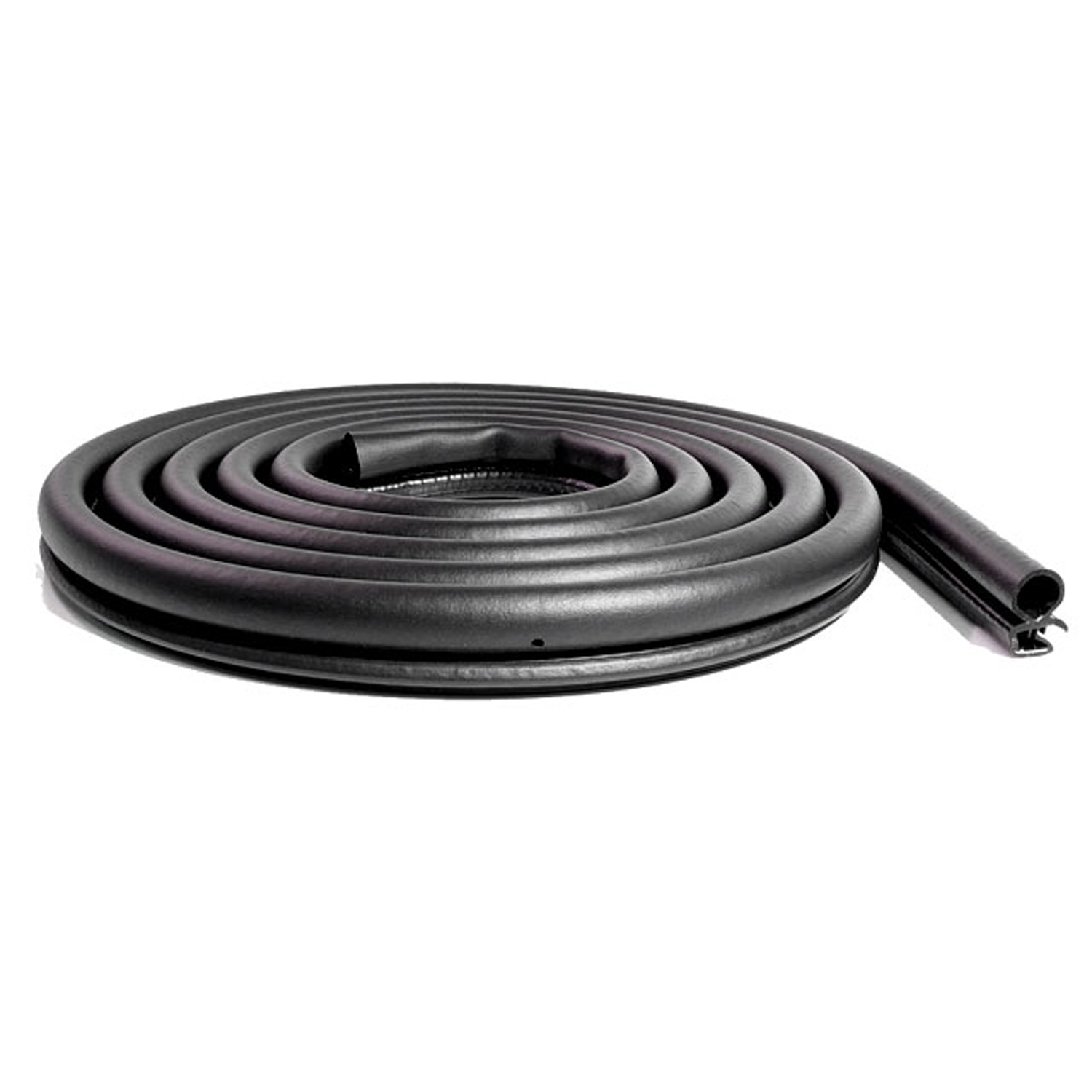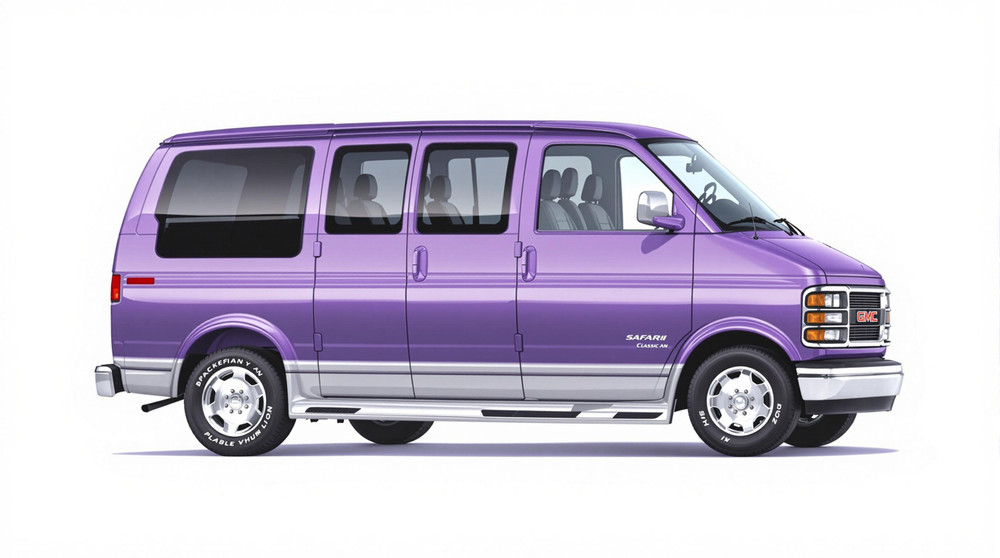Image of 2001 Gmc Safari, Note: These illustrations use artistic license and may differ from actual historical models.
Performance Metrics
Fundamental Metrics
Emotional Appeal
MMP Rating
| Engine Specifications | |
|---|---|
| Engine: | 4.3L V6 |
| Displacement: | 262 cu in, 4293 cc |
| Horsepower: | 190 hp @ 4400 rpm |
| Torque: | 250 lb-ft @ 2800 rpm |
| Compression Ratio: | 9.2:1 |
| Ignition System: | Electronic |
| Cooling System: | Liquid-cooled |
| Performance Specifications | |
| 0-60 Time: | 11 seconds |
| 1/4 Mile Time: | 18 seconds |
| Top Speed: | 99 mph |
| Transmission and Drive | |
| Drive Type: | RWD (Rear Wheel Drive) |
| Transmission Type: | 4-speed automatic |
| Fuel and Efficiency | |
| Fuel System Type: | Fuel injection |
| MPG: | 14 city / 19 highway |
| Dimensions and Brakes | |
| Brakes: | Front disc / rear drum |
| Wheelbase: | 111.2 in |
| Weight: | 4,500 lbs |
Note: Specifications for classic cars are given to the best of our ability, considering the limited and variant data available.
Unveiling the Workhorse: The 2001 GMC Safari Van
The turn of the millennium heralded a quiet yet steadfast contender in the automotive arena—the 2001 GMC Safari Van. This versatile vehicle, crafted by General Motors, was a testament to functionality and durability. As the automotive world was pivoting towards sleeker designs and crossover SUVs, the Safari held its ground as a reliable multi-purpose van, catering to families and businesses alike. A unique fact that might pique your interest: the Safari, alongside its twin the Chevrolet Astro, was one of the last mid-sized vans in North America to utilize a traditional truck-based, rear-wheel-drive layout.
Design and Innovation
The exterior of the 2001 GMC Safari Van was characterized by its boxy silhouette—a design choice that maximized interior space. The van's prominent grille and squared-off headlights exuded a no-nonsense attitude, while the body-on-frame construction promised ruggedness. Inside, the Safari offered a functional interior with durable materials designed to withstand the rigors of daily use. Technologically, it featured amenities such as power windows and door locks, air conditioning, and available all-wheel drive—innovations that provided comfort and versatility. Color options ranged from subdued to vibrant, with Dark Toreador Red and Cadet Blue Metallic being popular choices. The most iconic body style was arguably the passenger version, which could comfortably seat up to eight occupants.
Historical Significance
The GMC Safari's impact on automotive design may not have been revolutionary, but its commitment to utility over fashion left a lasting impression. It stood out for its truck-like durability in a market that was increasingly favoring car-like unibody constructions. The Safari's ability to double as a cargo van made it a favorite among tradespeople and small businesses.
Performance and Handling
Under the hood, the 2001 GMC Safari boasted a 4.3-liter V6 engine that delivered adequate power for its class. While it wasn't built for speed, with modest acceleration figures, it offered a reliable performance that owners came to trust. The ride quality was generally smooth, though some road imperfections could be felt due to its truck-based underpinnings. The driving experience was straightforward and honest—the hum of the V6 was a constant companion, and the handling was predictable if not particularly agile.
Ownership Experience
The Safari found its niche as a daily driver for families needing space and as a dependable work vehicle. Its ease of repair and general reliability contributed to its longevity on the road. Maintenance was relatively straightforward, making it an accessible vehicle for the average owner to keep running.
Fun Facts
The GMC Safari has had its share of screen time, appearing in various movies and TV shows as the go-to van for characters needing a practical vehicle. While it may not have set records in speed or sales, its endurance is notable—many Safaris are still on the road today. Criticisms often centered around its outdated styling and less-than-stellar fuel economy, but these were minor quibbles in light of its overall utility.
Collector's Information
As of now, the 2001 GMC Safari Van isn't typically seen as a collector's item, but its robust build has allowed many to survive well into the 21st century. With production numbers not being particularly low, rarity isn't a selling point for this vehicle. However, well-maintained examples can fetch a decent price due to their utility value. Current value ranges are difficult to pinpoint but expect a well-kept Safari to sell anywhere from $2,000 to $5,000 depending on condition and mileage.
Conclusion
The 2001 GMC Safari Van may not have been the flashiest or fastest vehicle of its time, but it carved out a place for itself with undeniable practicality and resilience. Its legacy is one of steadfast service—a vehicle that delivered on its promises without fanfare or pretense. For those who value utility and reliability, the Safari remains a worthy contender in the automotive history books.
2001 Gmc Safari Catalog of Parts
 2001 GMC Safari Extruded door seal (imported). Universal replacement part-IS-MW00100Extruded door seal (imported). Universal replacement part. Made with flexible steel core. Fits front or rear and either side on passenger doors. Does not fit slider/cargo doors and liftgates on vans and mini-vans. 1-3/16 in. X 3/4 in. X 13 ft. 4 in. Each.
2001 GMC Safari Extruded door seal (imported). Universal replacement part-IS-MW00100Extruded door seal (imported). Universal replacement part. Made with flexible steel core. Fits front or rear and either side on passenger doors. Does not fit slider/cargo doors and liftgates on vans and mini-vans. 1-3/16 in. X 3/4 in. X 13 ft. 4 in. Each.Why Choose Metro?
For over 100 years, Metro Moulded Parts has been the pinnacle of quality in classic car restoration parts. Our commitment to precision and authenticity in every component ensures a perfect fit and an OEM-level appearance.
- Expert Craftsmanship & Quality: Each part is a testament to our dedication to reliability and perfection, crafted from original designs and thoroughly tested.
- Advanced Technology: We use cutting-edge techniques to create flawless, long-lasting parts that surpass others in performance.
- SuperSoft Sponge – The Ultimate Door Seal: Not only are our door seals 30% softer than competitors', but they're also guaranteed to never leak. They effectively reduce wind and road noise, enhancing your classic car's comfort and driving experience.
- Proudly American: Our parts are a product of American craftsmanship, made in the USA with a spirit of excellence and heritage.
- Unrivaled Warranty: We back our products with a 30-year industry-leading warranty, a testament to our confidence in their quality.
Join us in preserving the legacy of classic cars with parts that are crafted for perfection, not just made.

